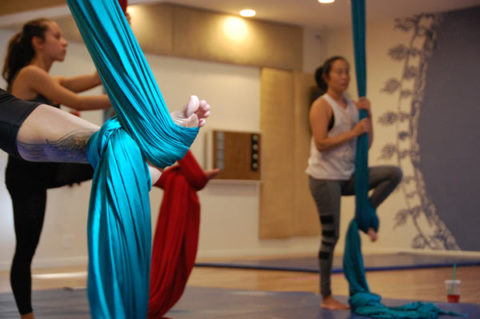

On the other hand, as I ventured into aerial arts, I had a single question, “Can I do it?” The answer, that I could do it, was readily available to me as soon as I took my first class. For instance, one question I discuss possible answers to below is, “what makes something valuable?” Such a question doesn’t have an easy answer, and thus requires the examination of several possible answers. It is easy to become overwhelmed by the many possible answers to such questions. For philosophy, the questions brought on by such curiosity are endless. The processes for both of these seemingly opposite activities are founded upon wonder induced curiosity. The interesting thing is, when I consider the reasoning behind why I got into, and continue to participate in aerial arts, I find I had similar reasons when I choose to go into the field of philosophy. When these skills are put to music to create a routine, it becomes a unique form of dance.īy now you might be wondering why a philosopher is participating in a sport/art-form such as aerial arts. Aerial arts involve a combination of gymnastics, poses, climbing, and various feats of strength while in the air. However, for those still unable to picture what aerial silks is, both aerial silks and hoop are classified under aerial arts. I also take circus ring lessons.” Usually people know what a circus ring is. I often further explain, “Aerial silks is a type of circus act. Other times people are unfamiliar with the Cirque Du Soleil act as well. Sometimes to explain what I do I tell them, “It’s the thing where people climb curtains in Cirque Du Soleil.” Sometimes they get it. Aerial silks is generally higher up from the ground and a good deal more intense. However, aerial yoga has to do with using fabric to do yoga poses in the air. Others are familiar with a related, yet dissimilar, practice called aerial yoga. When I tell people I do aerial silks, I am often met with blank stares of confusion.

The piece of fabric I am hanging from is a type of circus apparatus called aerial silks. Instead, my mind is consumed by the feeling of the fabric pressing on my palm, the tension on my arm-muscles, the control and movement I need to have for the next part in the pose sequence, and the spin from the swivel above me.
#Aerial dancing full
I’m not thinking about the grading I should have finished yesterday, or the fact that the sink is full of dishes, nor even the fact that if I slipped I would fall twenty feet. An Aerial Hammock may also be called a silk hammock.Twenty feet in the air, I hang one-handed from a piece of scarlet fabric. The Lyra is sometimes called the steel lyra hoop, the aerial hoop, the aerial ring, or cerceau/cerceaux. Build up some bragging rights for yourself, make some friends, have a blast in our safe, relaxed atmosphere while challenging yourself to a new and different style of exercise.įor reference: Aerial Silks can also be known as aerial ribbons, aerial tissues, fabric, ribbon, or tissu. Practiced safely, under the guidance of your qualified aerial workout instructor at Still & Moving Center in Hawaii, this fun, exciting dance style can be a fantastic way to stay in shape and take your love of dance literally to the next level. With regular practice, Aerial dance’s more acrobatic style can help you develop your muscular strength and courage, as well as a dancer’s flexibility and grace.
#Aerial dancing how to
In our aerial workout and dance classes in Hawaii, you’ll learn how to work with gravity and your body weight to create stunning shapes and moves. Take your dance off the floor, and into the air, with our aerial workout and dance classes in Hawaii! If you’ve always wanted to experience the thrill of a dance style popularized by Cirque du Soleil, this opportunity is for you! You can do Aerial Dance at Still & Moving on the aerial silks, aerial hammock, or the steel hoop lyra.ĭancing off the ground requires and cultivates confidence and a different set of skills and strengths than your typical dance class.


 0 kommentar(er)
0 kommentar(er)
